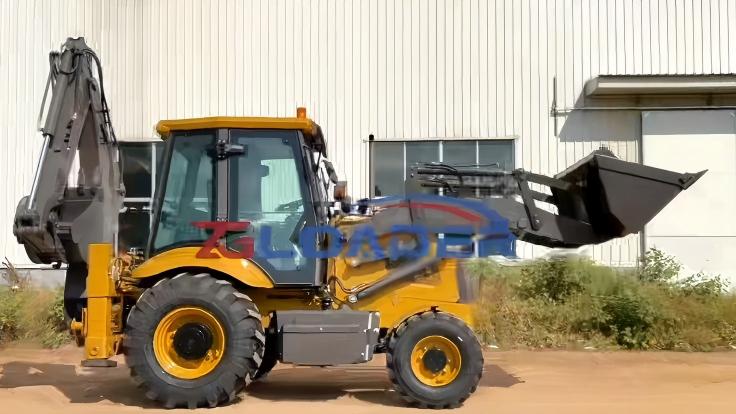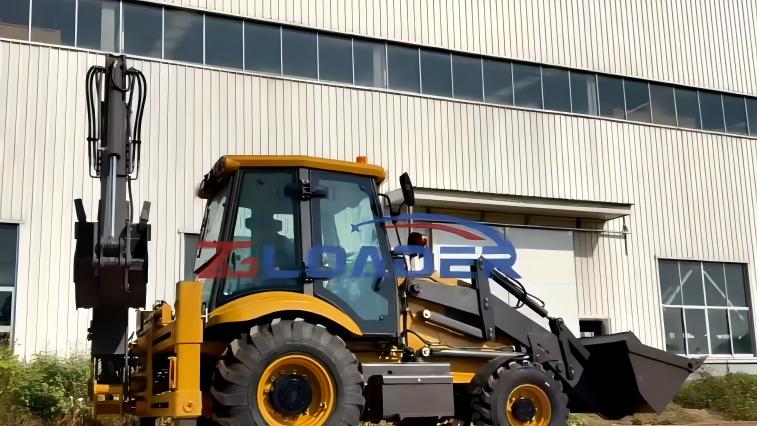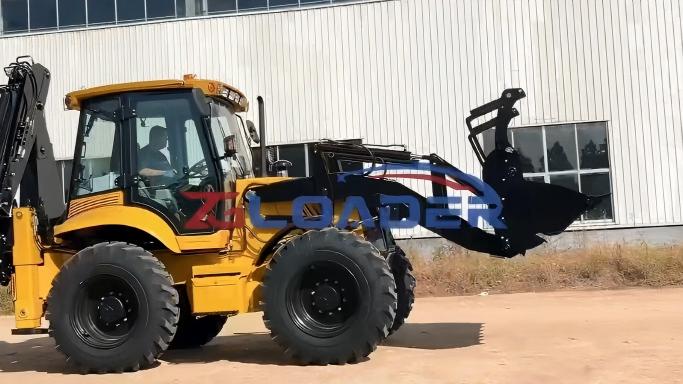What is the Weight of a Typical Backhoe?
Introduction
Backhoes are some of the most versatile and commonly used machines in the construction and agricultural industries. Whether digging trenches, moving soil, or performing light demolition, these machines combine the functions of a loader and an excavator in one. A critical factor when selecting or transporting a backhoe is understanding its weight. The weight of a backhoe influences everything from transport logistics and operating safety to fuel consumption and ground impact.
This article will explore what a typical backhoe weighs, compare models from top manufacturers, and explain the factors that affect a backhoe’s weight. Whether you're a contractor, equipment buyer, or logistics planner, this guide will help you understand the role of weight in the performance and usability of backhoes.
What is a Backhoe?
A backhoe, also known as a backhoe loader, is a heavy construction vehicle that consists of three main components: a tractor-like base that provides mobility and traction; a front loader bucket for lifting and moving material; and a rear backhoe arm for digging and trenching. This dual-functionality makes backhoes especially valuable on job sites where multiple tasks are required. Backhoes are frequently used in road construction, landscaping, utility trenching, and even in farming.
Backhoes are often compared to excavators, but they are generally smaller, more versatile, and designed for lighter tasks. Their ability to travel on roads and handle multiple tools makes them indispensable for small to medium projects.
Weight Ranges of Typical Backhoes
Backhoes come in a variety of sizes, and their weights can vary widely. On average:
Compact or Mini Backhoes weigh between 5,000 and 9,000 lbs (2,268–4,082 kg). These are best for tight-access areas or landscaping.
Standard/Mid-Size Backhoes range from 13,000 to 17,000 lbs (5,897–7,711 kg). These are the most commonly used in general construction.
Large Backhoes can weigh up to 25,000 lbs or more (11,340+ kg), used for industrial and heavy-duty tasks.
The average weight of a standard backhoe is around 15,000 lbs (6,800 kg).
Factors That Affect Backhoe Weight
Several key factors influence how much a backhoe weighs:
Engine Size and Horsepower: More powerful engines generally weigh more due to additional components and larger radiators.
Bucket and Attachments: Larger buckets, quick couplers, and specialized attachments add extra weight.
Drive Type (2WD vs 4WD): Four-wheel-drive backhoes have heavier drivetrains and axles.
Tires and Counterweights: Heavy-duty tires and additional counterweights contribute to increased total weight.
Frame Material and Size: The structural design, steel thickness, and reinforcements significantly affect the backhoe’s weight.
Cab Features: Enclosed cabs with air conditioning, heating, and electronics also add weight compared to open station models.
Each of these components can increase or reduce the base weight of a backhoe by hundreds of pounds.
Weight by Manufacturer and Model
Let’s look at the approximate operating weights of popular backhoe models from well-known brands:
Brand Caterpillar, Model 420 XE, Operating Weight 17,000 lbs (7,711 kg)
Caterpillar 430 18,300 lbs (8,301 kg)
John Deere 310L 14,000 lbs (6,350 kg)
John Deere 410L 17,600 lbs (7,983 kg)
Case 580N 15,810 lbs (7,173 kg)
Case 590 Super N 17,651 lbs (8,010 kg)
JCB 3CX 17,196 lbs (7,800 kg)
JCB 4CX 19,070 lbs (8,650 kg)
These values are manufacturer-specified “operating weights,” which usually include fuel, fluids, and standard attachments.
Why Backhoe Weight Matters
Understanding the weight of a backhoe isn’t just for curiosity — it affects many real-world tasks:
Transport and Trailer Requirements: You’ll need a trailer rated to safely carry the backhoe’s full weight. Overloading can result in accidents, fines, or equipment damage.
Ground Pressure and Soil Impact: Heavier backhoes may compact soil more or cause damage on soft terrain, affecting landscaping and site prep.
Fuel Consumption: Heavier machines require more power, and thus more fuel, especially during transport or uphill operations.
Stability and Lift Capacity: Added weight can help with balance, particularly when digging or lifting with the front loader.
Legal Road Limits: Different regions have strict limits on transported equipment weight. You may need permits or escort vehicles for heavy backhoes.
In summary, weight directly affects operational safety, site suitability, and transportation logistics.
How to Find Your Backhoe’s Weight
If you're trying to determine the exact weight of your machine, here are several ways to do it:
Manufacturer’s Manual or Website: Always the first and most accurate source. Look for the “Operating Weight” or “Shipping Weight.”
Machine’s ID or Spec Plate: Found on the body of the machine, typically near the cab or engine bay.
Use a Vehicle Scale: Especially useful if your backhoe has been customized or includes non-standard attachments.
Contact the Dealer: They can provide detailed information, including options or upgrades that may affect the weight.
If transporting multiple machines, make sure to calculate the combined weight, including tools, fuel, and trailers.
Tips for Managing and Transporting Backhoe Weight
Moving a backhoe safely requires planning. Here are some essential tips:
Use the Right Trailer: Tandem-axle trailers or lowboys are often required for standard-sized backhoes.
Balance the Load: Center the backhoe’s weight over the trailer axles to avoid sway and uneven pressure.
Secure Attachments: Remove buckets or stabilizers if needed and secure all parts to avoid shifting during transport.
Follow Permit Laws: For weights over legal highway limits (typically around 26,000 lbs including truck and trailer), permits may be required.
Plan the Route: Avoid bridges, overpasses, or weight-restricted roads when hauling large equipment.
A well-planned transport minimizes risks and ensures compliance with local transport regulations.
Conclusion
A typical backhoe weighs between 13,000 and 17,000 pounds, though this can vary significantly based on model, size, and configuration. Compact models weigh much less and are better for tight workspaces, while large, industrial backhoes are considerably heavier and more powerful.
Understanding the weight of a backhoe is crucial for safe transport, proper job site usage, and operational efficiency. Whether you are purchasing, renting, or transporting, knowing the weight helps you make better decisions and comply with safety regulations.
Post time:Jun.18.2025



